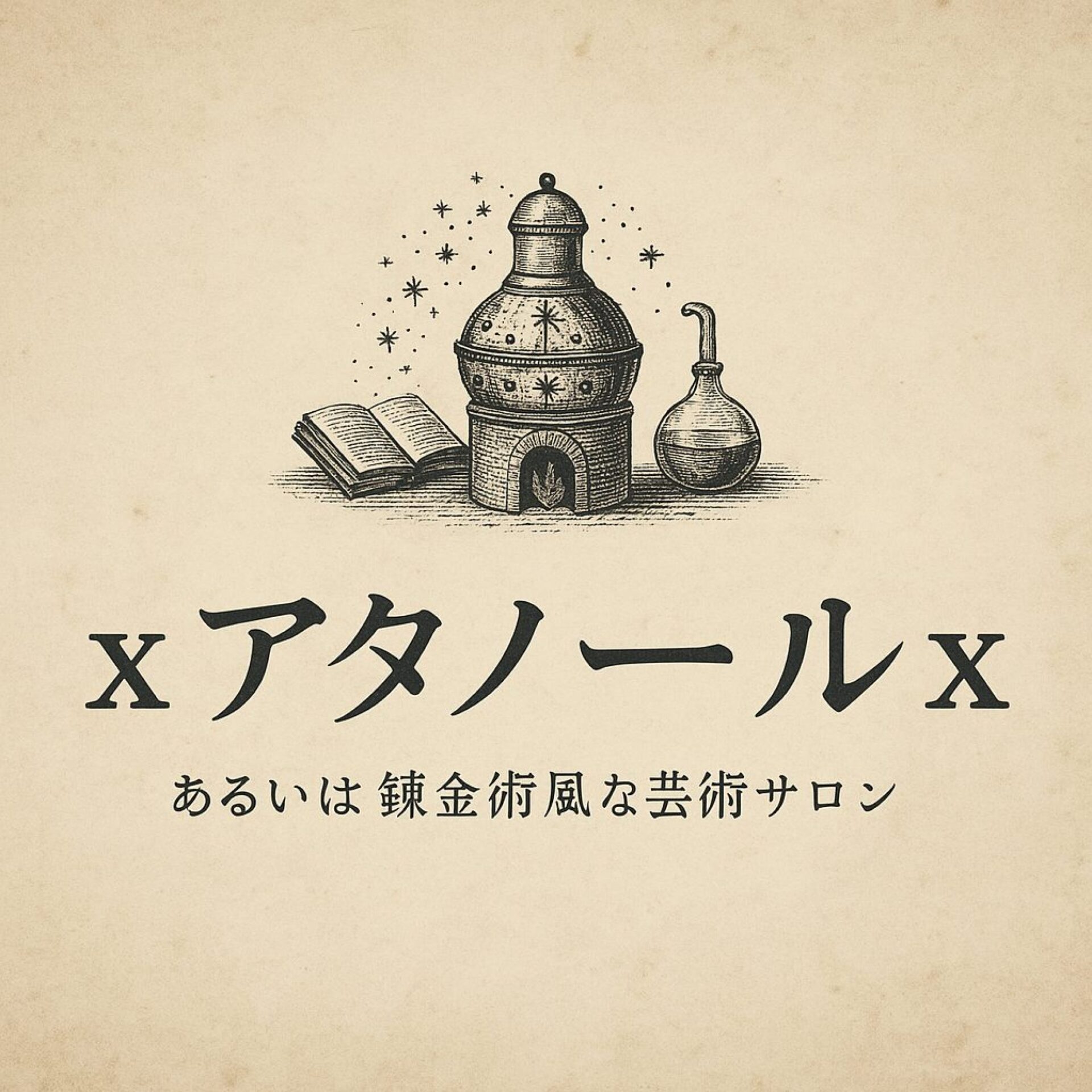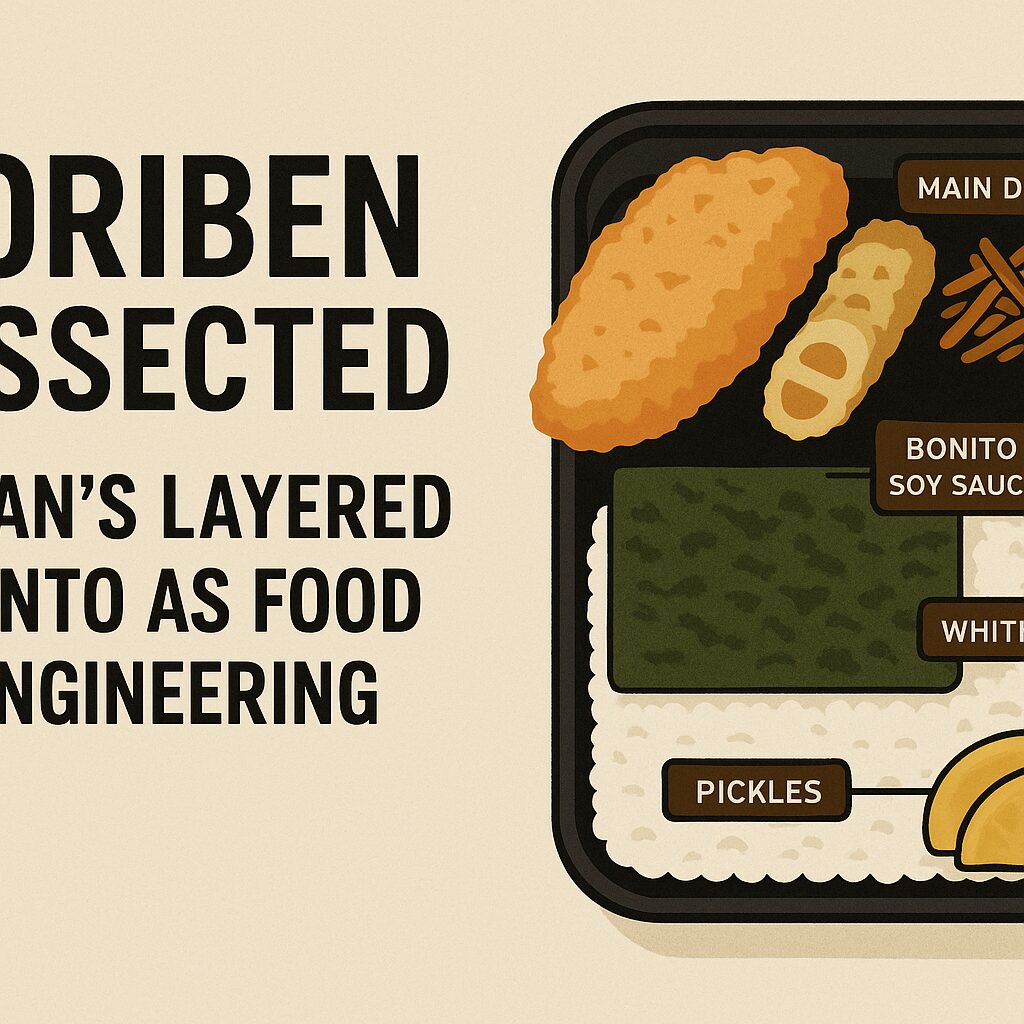Noriben: A Functional and Layered Analysis of Japan’s Quintessential Bento
- 1. Introduction: What Is Noriben?
- 2. Structural Analysis: The Logic of Multi-layered Composition
- Layer 1: White Rice (Base Layer)
- Layer 2: Bonito Flakes + Soy Sauce + Nori
- Layer 3: Main Dishes (The Fried Food Trinity)
- Layer 4: Pickles (Takuan)
- [A] Fish Used in White Fish Fry: Alaska Pollock & Hoki
- [B] Fish Paste Components Used in Chikuwa
- Conclusion
1. Introduction: What Is Noriben?
“Noriben” is the ultimate expression of minimalism in Japanese bento culture. Despite its simplicity, it has earned high praise for its structural efficiency and culinary completeness. Among its various incarnations, the Hotto Motto version stands out as a pinnacle of standardization and mass production—a true “national industrial bento.”
2. Structural Analysis: The Logic of Multi-layered Composition
Noriben consists of the following four layers:
- Layer 1: White Rice (Base Layer)
– A flat bed of polished rice.
– Primary source of carbohydrates.
– High moisture content acts as a buffer for other toppings. - Layer 2: Bonito Flakes + Soy Sauce + Nori (Flavor & Adhesion Layer)
– Umami synergy between glutamate (from seaweed/rice) and inosinate (from bonito).
– The “umami bomb” core of noriben. - Layer 3: Main Dishes (The Fried Food Trinity)
– White fish fry (with tartar sauce)
– Chikuwa tempura
– Kinpira gobo (burdock root stir-fry)
→ A balanced mix of animal and plant proteins, lipids, and fiber. - Layer 4: Pickles (Takuan)
– A salty-sour accent.
– Functions as a palate cleanser and digestive aid.
Each Layer Reimagined as a Functional Unit
Each ingredient is not just a topping—it is a functional unit with a distinct role in the system.
Layer 1: White Rice (Base Layer)
- Polished Rice (Uruchi-mai)
While the exact variety is undisclosed, commercial blends are likely used—those that retain texture and moisture even when cold.
Sticky enough to bind with the seaweed.
“Pure white rice” is considered a virtue in noriben culture.
◎ Roles:
- Primary energy source (carbohydrates)
- Absorbs oils and sauces from toppings
- Textural stabilizer that harmonizes with other elements
Layer 2: Bonito Flakes + Soy Sauce + Nori
- Bonito Flakes (Katsuobushi): Thinly shaved and rich in inosinate. Enhances umami synergy with rice and nori.
- Soy Sauce: Light or medium type. Applied sparingly to avoid sogginess. Aroma is the key, not saltiness.
- Nori (Seaweed): Roasted nori, of medium thickness. Becomes semi-moist from the rice, enabling adhesive texture during chewing.
◎ Functions:
- Core flavor enhancer (umami concentrate)
- Prevents toppings from sliding off
- Black surface adds visual intrigue and symbolic order
Layer 3: Main Dishes (The Fried Food Trinity)
- White Fish Fry (+ Tartar Sauce):
– Typically Alaska Pollock or Hoki.
– Light breadcrumb coating.
– Tartar sauce links fried surface to rice via acidity and creaminess. - Chikuwa Tempura:
– Fish paste with green seaweed batter.
– Offers softness, saltiness, and a roasted aroma in one bite. - Kinpira Gobo:
– Stir-fried burdock and carrot in sweet-soy glaze.
– Rich in fiber, polyphenols, and hidden calories.
◎ Functions:
- Provides chewing satisfaction (texture variation)
- Flavor diversity to balance the repetitive nature of rice
- Combines animal, plant, and root-based nutrients for near-complete nutrition
Layer 4: Pickles (Takuan)
- Takuan (Pickled Daikon):
– Pickled with rice bran and colored yellow (turmeric or food coloring).
– Balances sweetness, sourness, and salt.
– Stimulates saliva, cleanses the palate.
◎ Functions:
- Palate reset switch
- Color contrast (visually stimulating yellow)
- “One last bite” tradition reinforces meal closure
[A] Fish Used in White Fish Fry: Alaska Pollock & Hoki
🐟 Alaska Pollock (Gadus chalcogrammus)
- Classification: Cod family
- Distribution: North Pacific, especially Bering Sea
- Uses: Fish burgers, fried fillets, surimi, kamaboko
- Nutrition: High in protein, low in fat. Ideal for bento due to minimal drying when cooled.
🐟 Hoki (Macruronus novaezelandiae)
- Classification: Blue grenadier, deep-sea cod family
- Distribution: Around New Zealand, in cold waters
- Uses: Frozen fish fillets, fried dishes
- Nutrition: Slightly more fat than pollock, juicier texture, contains DHA and EPA.
[B] Fish Paste Components Used in Chikuwa
🐟 Alaska Pollock Surimi (Main Ingredient)
- Frozen on board, deboned, skinned, rinsed and ground.
- Rich in myosin and fibrous proteins—ideal for elasticity.
- Absorbs water/oil well; adaptable to frying, steaming, and baking.
🐟 Blended Fish Meats (e.g., Mackerel, Horse Mackerel, Threadfin Bream)
- Horse Mackerel: Strong fish flavor
- Threadfin Bream: White and mild
- Others: Eel, Hamo, Sardine—blended for texture and taste
→ This is essentially alloy engineering in the world of food processing.
Conclusion
Noriben is not just a cheap rice-and-seaweed lunchbox.
Behind its simplicity lies a sophisticated interplay of food processing technologies, cold-chain logistics, flavor science, and nutritional design.
It is, in essence, a consumable crystallization of food engineering.
Let’s Buy & Eat! →https://www.hottomotto.com/




コメント